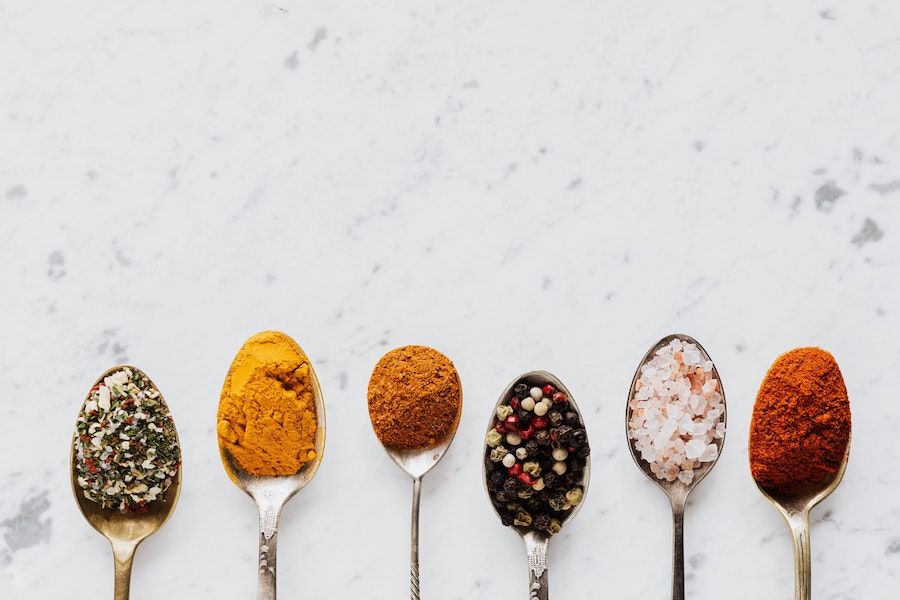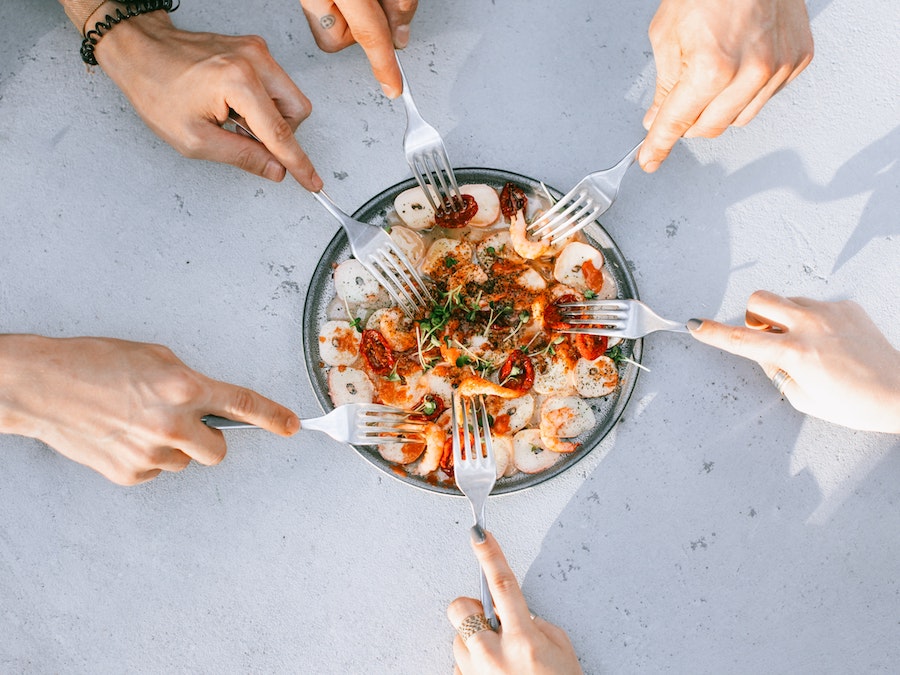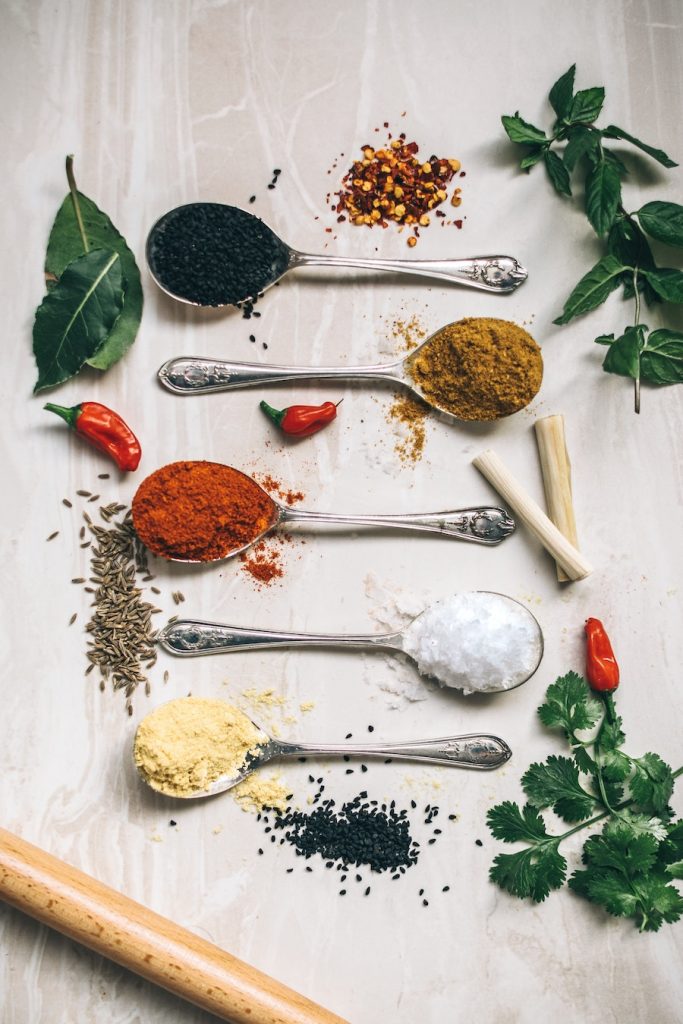It’s a fact that we all have different palates. Very frequently, we find that the recipes we’re trying to cook might be too flavorful or too bland for our taste.
However, cooking delicious dishes doesn’t require any magical powers – a few tricks will do.
As an experienced home cook, I must admit, I still make mistakes when I cook. But as time has gone by, I’ve figured out that tasting the food throughout the cooking time and making adjustments accordingly can help save any dish before serving it to my family.
If you’re not a seasoned cook or, like me, you’re a home cook who often commits mistakes, all you need to do is to practice and of course, have extra patience.
Before getting started, you need a better understanding of different flavors and how they work on every dish to be able to adjust depending on your preference.
KINDS OF TASTES

Universally, there are five (5) accepted basic tastes that are perceived by our taste buds: sweet, salty, sour, bitter, and umami. Let us dig in through these tastes to know how they can make your favorite recipes extra special.
SWEET: Sweetness is often described as the pleasure taste that is desirable to the human body. This taste is caused by a form of sugar or alcohol. Sweet foods are often high in carbohydrates, like glucose, which is our core source of energy and provide our bodies with fuel.
Examples of sweet foods: honey, candy, sugar, maple syrup, bananas, figs.
SALTY: Salt is a component that helps our body in digestion and in cleansing our tissues. Saltiness helps in enhancing flavors. A pinch of salt to sweet dishes amplifies the sweet notes, often making it necessary to add some.
Salt also reacts to the sodium chloride receptor in our mouths, which is the simplest taste receptor.
Examples of salty foods: soy sauce, Kosher salt, sea salt, Maldon salt.
BITTER: Among the five tastes, bitter is the one we’re most sensitive to. Some bitter compounds, mostly in plants, are known to be toxic. However, bitterness can also be considered healthy, like the bitter tastes of coffee and dark chocolates, which are brought in by antioxidants that help our metabolism.
Examples of bitter foods: coffee, wine, chocolate, citrus zest, arugula, kale.
SOUR: Hydrogen ions that are detected by our taste buds are responsible for the sourness or the tartness we experience when eating foods that have acidity.
However, sourness is not only found on mouth-puckering foods like citrus fruits.
It’s also present on spoiled or rotten food.
Examples of sour foods: yogurt, buttermilk, cranberries, pickles, apple cider vinegar.
UMAMI: Umami is often characterized with a savory or meaty taste, which often increases our appetite. It’s the most recent taste added to the “basic taste” list, after Kikunae Ikeda, a Japanese chemist, uncovered its chemical basis in the early 20th century.
The presence of glutamic acid, which he later renamed “umami” in Japanese, or “good flavor”, is responsible for this taste.
Examples of umami foods: cheese, anchovies, mushrooms, truffles, animal and vegetable stock, oysters, nori (dried seaweed).
WHAT IS SEASONING?
Seasoning is the act of adding salt, pepper, sugar, vinegar, and other herbs and spices into your dish. Seasoning is necessary, for it creates deep flavors and binds your ingredients together for a more balanced and flavorful dish.
WHEN IS IT BEST TO SEASON?

Seasoning can be done twice: Before cooking, to allow the flavors to develop throughout your cooking time, and at the end, to slightly adjust the taste.
HOW TO I FIX MY OVER-SEASONED DISH?
Don’t worry if you forget to season your food throughout your cooking. Below are simple ways to fix your food before it reaches the table:
TOO SWEET?
Adding sour, spicy, or bitter ingredients can downplay an overly-sweet dish. You can try adding herbs such as mint, sour fruits like blackberries, dairy, or chopped nuts to it.
Stay away from salty ingredients, since they could bring out the sweetness even more.
TOO SALTY?
Prevent making your food too salty by making sure you add salt little by little.
However, if you end up with an over-salted dish or sauce, you can fix it by adding something sweet like a pinch of sugar or something sour, like a splash of vinegar or lemon to lessen the saltiness.
For soups, you can try adding some water or unflavored broth. However, this can affect the consistency of your dish.
TOO SOUR?
Keeping a box of baking soda is good not just for cleaning, but also for rescuing your overly sour dish. Make your dish more alkaline by adding a pinch of baking soda to it (make sure not to put too much!).
However, if you don’t like this option, keep in mind that you can soften the effect of your overly sour dish by combining bitter, salty, or sweet ingredients like sugar, which is the perfect balancer when dealing with too much acid.
TOO SPICY?
Some people are brave enough to enter a chilli eating contest, and others, like me, can’t even handle a little bit of spice.
To rescue your taste buds from too much heat, try adjusting your dish by adding dairy. The casein protein found in milk bonds to spicy capsaicin molecules
and washes them away.
You can also add sugar, acid, or nut butter like tahini, peanut, or almond butter. The fat content on nut butter can help quench the flame.
TOO BITTER?
You may add something sweet, salty, or sour ingredients to balance out the bitterness of your dish.
To neutralize naturally bitter foods, like bitter gourd, you can slice, scrub with salt, squeeze the salt, and rinse before cooking in order to minimize the bitterness.
PRO TIP: Keep this flavor guide handy while you cook and remember to taste your food at every stage to keep your dish as delicious as possible.
MORE TIPS TO A FLAVORFUL DISH

Aside from a well-seasoned dish, here are some more tips to make your dish more flavorful overall:
-
-
Use fat: Take note that FAT = FLAVOR. Most of the flavors in meat comes from its fat, which is also described as an entire rainbow of flavors.
-
Consider the saltiness of your ingredients: one good way to prevent an overly-salted dish is to anticipate how much saltiness each ingredient can contribute to the whole dish. If your dish has loads of cheese and bacon, for example, it may already be at its ideal saltiness level by itself, so you may not need more than a pinch of salt.
-
Browning means flavorful: Saying that browned food is more flavorful is not just an opinion, but science. Amino acids and reducing sugars undergo a chemical reaction that gives browned food a more complex and distinctive flavor. This is called the Maillard reaction.
Another reaction that happens in this case is called “Caramelization” or “browning of sugars” resulting in a brown color and a sweet and nutty flavor.
-
Add some booze: Adding some alcohol into your dishes like sauces, soups, desserts, jams, and marinades will surely bring them to the next level.
Alcohol improves flavor as it bonds with both fat and water molecules which allows it to carry aromas and flavor.
However, contrary to popular belief, alcohol does not entirely “burn off” while cooking. The amount of alcohol, amount of heat applied, cooking and standing time, and the physical dimensions of the cookware will determine how much alcohol will remain in your dish.
-
Use the “fond”: Fond is a French term for “base” that refers to the browned bits and caramelized stuff that usually sticks at the bottom of a pan or skillet after sautéing or roasting when you pour off the oil.
They may look nasty, but they have a huge impact on flavor. Don’t throw them away and use them to make a flavorful pan sauce or gravy.
-
